Hands On: Audemars Piguet Royal Oak Perpetual Calendar Ultra-Thin Ref. 26586TI
An all-titanium take on the RD#2.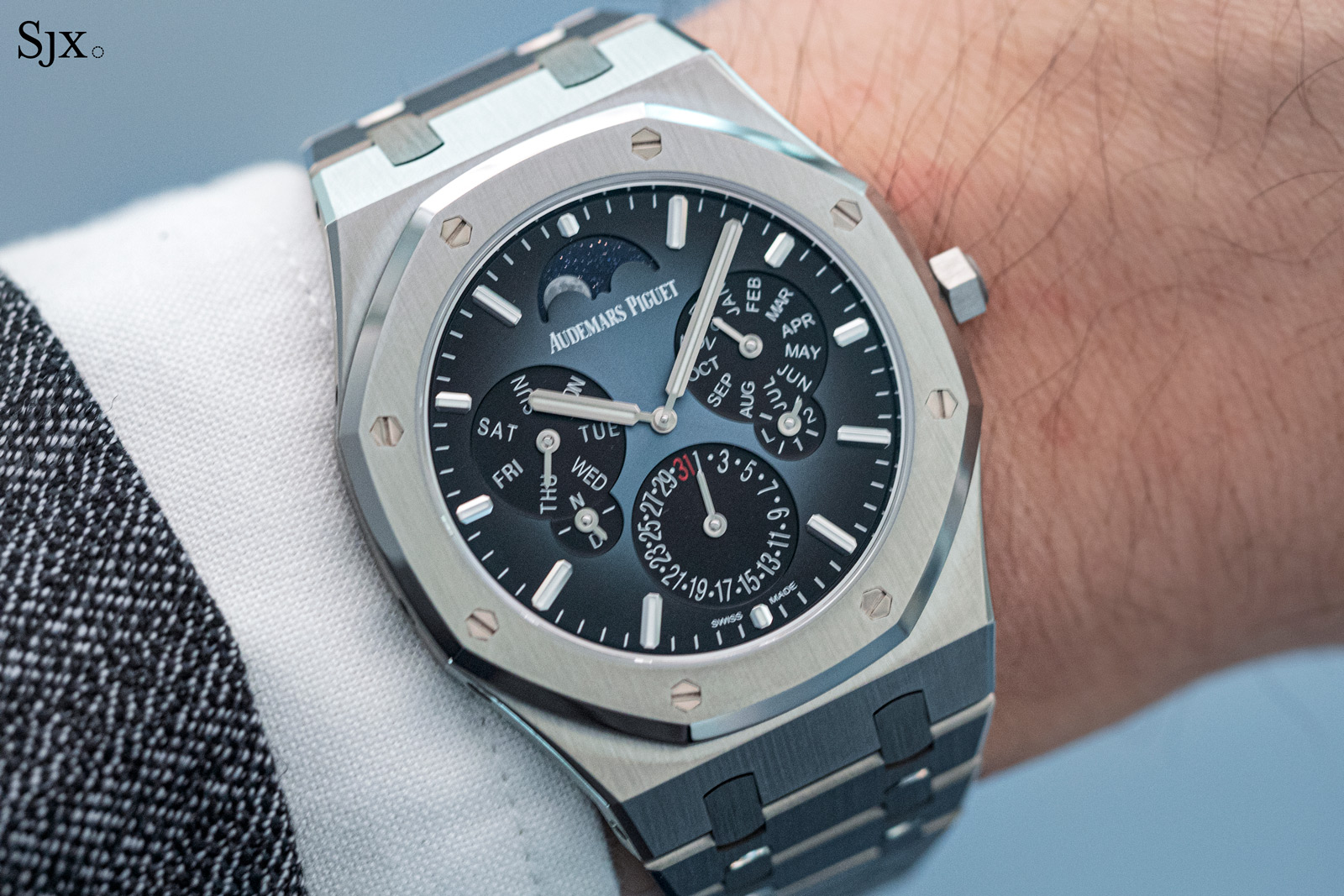
Audemars Piguet’s recent launches are mostly variations on a theme, but done well and strongly appealing, as exemplified by the Royal Oak “Jumbo” with a grained dial. The Royal Oak Selfwinding Perpetual Calendar Ultra-Thin 41 mm is exactly that.
Based on the thinnest-perpetual-calendar-ever #RD2 of 2018, the model was first presented in the two-metal combo of titanium and platinum a year later. But now it returns entirely in titanium, an arguably superior presentation that more low key thanks to an all-brushed finish and strikingly lightweight.
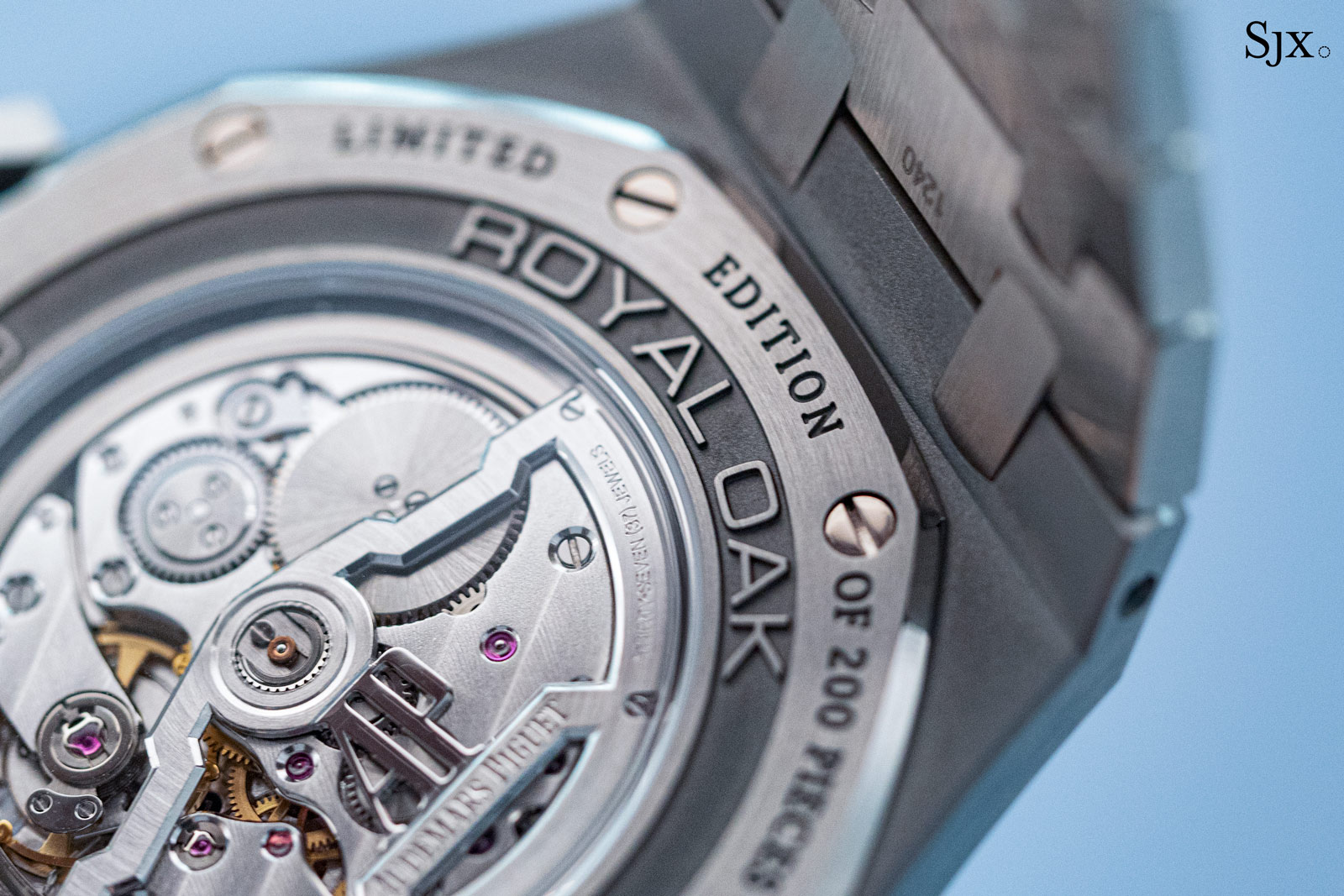
The clever cal. 5133 inside allows for a case just 6.2 mm high
Initial thoughts
The new perpetual calendar is probably the best of AP’s new releases. It combines a clever, original movement with the iconic case design, packaged in a compact, lightweight, and mostly discreet manner.
While this perpetual calendar is no longer the thinnest in the world – it was trumped by Bulgari last year – it is still remarkably thin. At 6.2 mm high, the case is almost a quarter slimmer than that of the Royal Oak “Jumbo” ref. 16202. As a result, this feels like a wafer on the wrist, a feeling accentuated by the lightness resulting from the all-titanium case and bracelet.
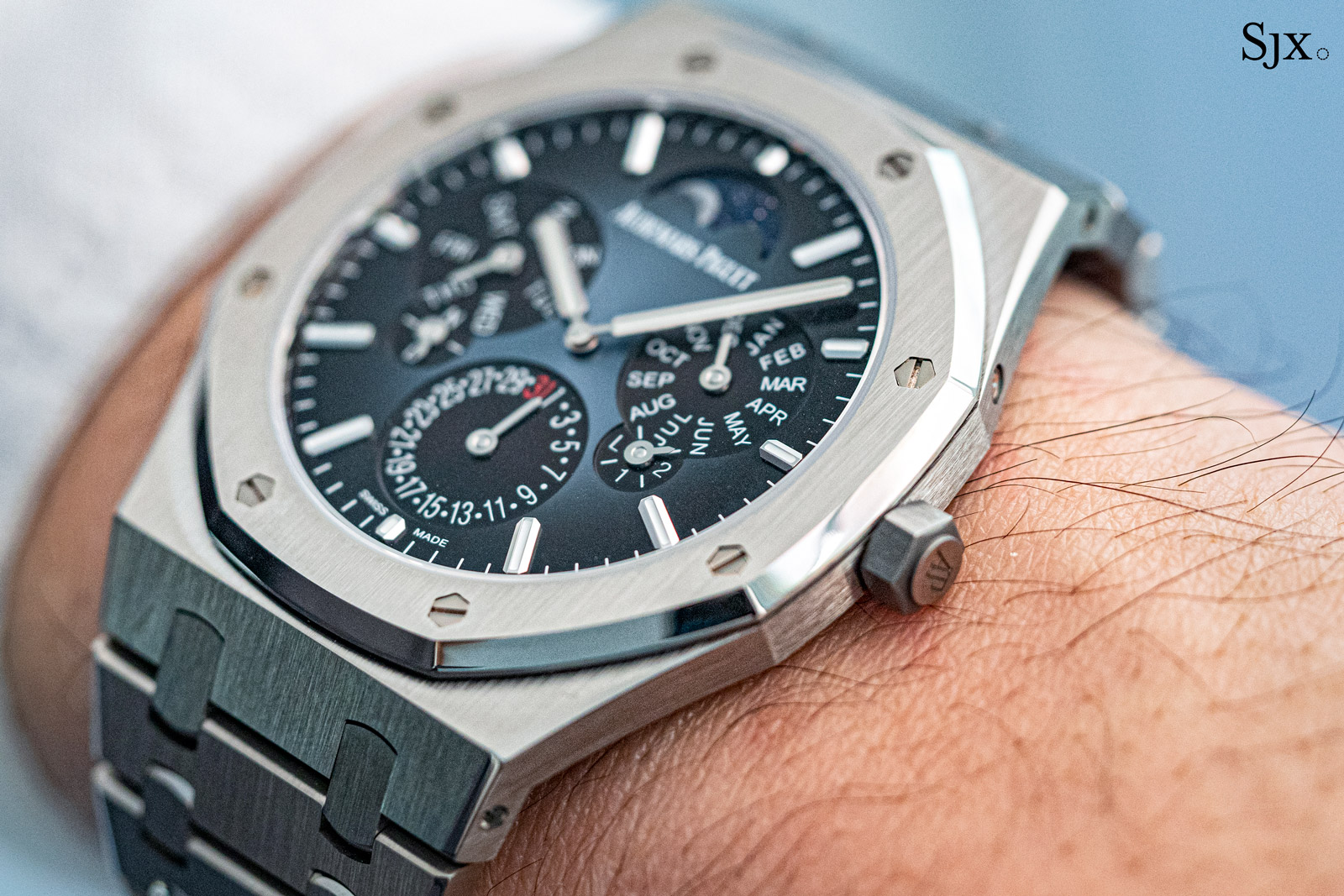
Because it is entirely titanium, this does away with the mirror-polished components that were platinum in the preceding model. This results in a more traditional Royal Oak finish that is slightly more restrained and certainly more elegant.
The other element new to this version is the smoked blue dial. It’s handsome and suits the clean feel of the watch, but I would have preferred the tapisserie guilloche that is quintessential Royal Oak.
Admittedly, the new perpetual calendar is merely a variant of the 2019 limited edition. Repetition is definitely not innovation or progress but it doesn’t take away from the intrinsic appeal of the watch. And with both the 2019 and current models each limited to 200 watches, the total number produced remains modest, an assurance this will remain fairly uncommon (at least for now).
The ultra-thin perpetual costs CHF137,000, a reasonable proposition as such things go. It is certainly more squarely priced than the new Offshore in ceramic, and about the same as more ordinary luxury-sports perpetual calendars like the Vacheron Constantin Overseas Ultra-Thin. Granted, most of its comparably-priced rivals are in precious metal, while this is inexpensive titanium, but this is undoubtedly more compelling both in terms of tactile feel and also the ingenious calibre.

Concept made real
Like its bi-metal predecessor, the new perpetual calendar is derived from the Royal Oak RD#2, the concept watch that was debuted in 2018 as the thinnest perpetual calendar wristwatch ever. Slender but weight thanks to an all-platinum case and bracelet, the RD#2 was just 6.3 mm high thanks to a cleverly designed movement.
The cal. 5133 inside was condensed to reduce the part count, while the calendar module was comprised of components spread out rather than stacked up. The result was a wider than usual calibre but one with exceptional slimness.
It quickly made it way into serial production as the 200-piece limited edition in titanium with the bezel and centre links in platinum. Though the concept watch had a traditional tapisserie dial, the limited edition simplified the aesthetic with a vertically brushed dial in dark blue.
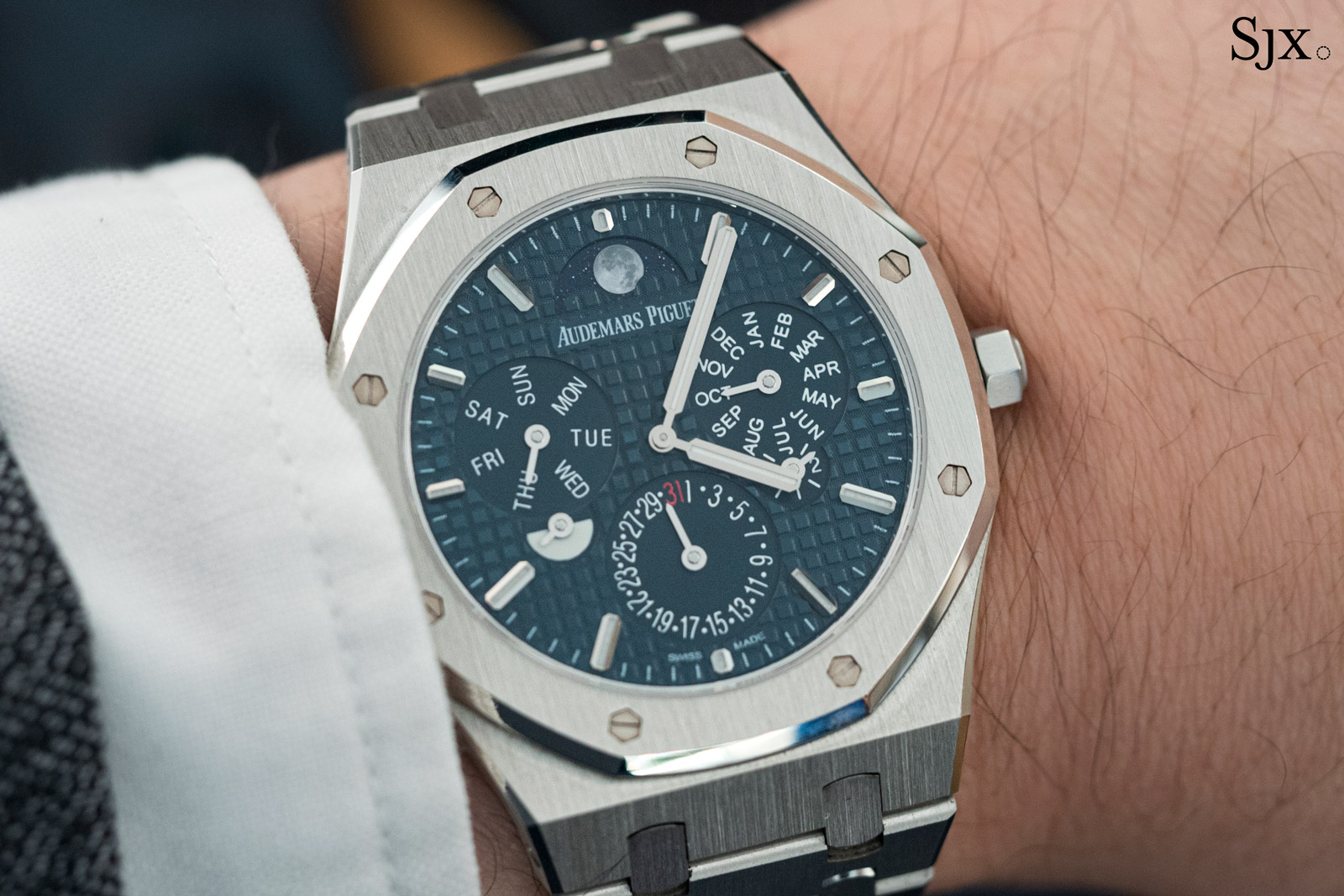
The Royal Oak RD#2 Perpetual Calendar ref. 26586PT from 2018
The new perpetual calendar is essentially another version of the 2019 limited edition. The case is identical in dimensions, but now entirely titanium in the conventional Royal Oak finish, which means brushed surfaces accented by polished bevels on all edges.
Even though titanium is a shade darker than steel and marginally more difficult to polish, the case and bracelet are perfectly finished, giving the surfaces a lustre that is indistinguishable from steel at arm’s length. And the alloy is of course lightweight, giving the watch striking lightness that is probably as good as it gets for an all-metal watch on a bracelet.
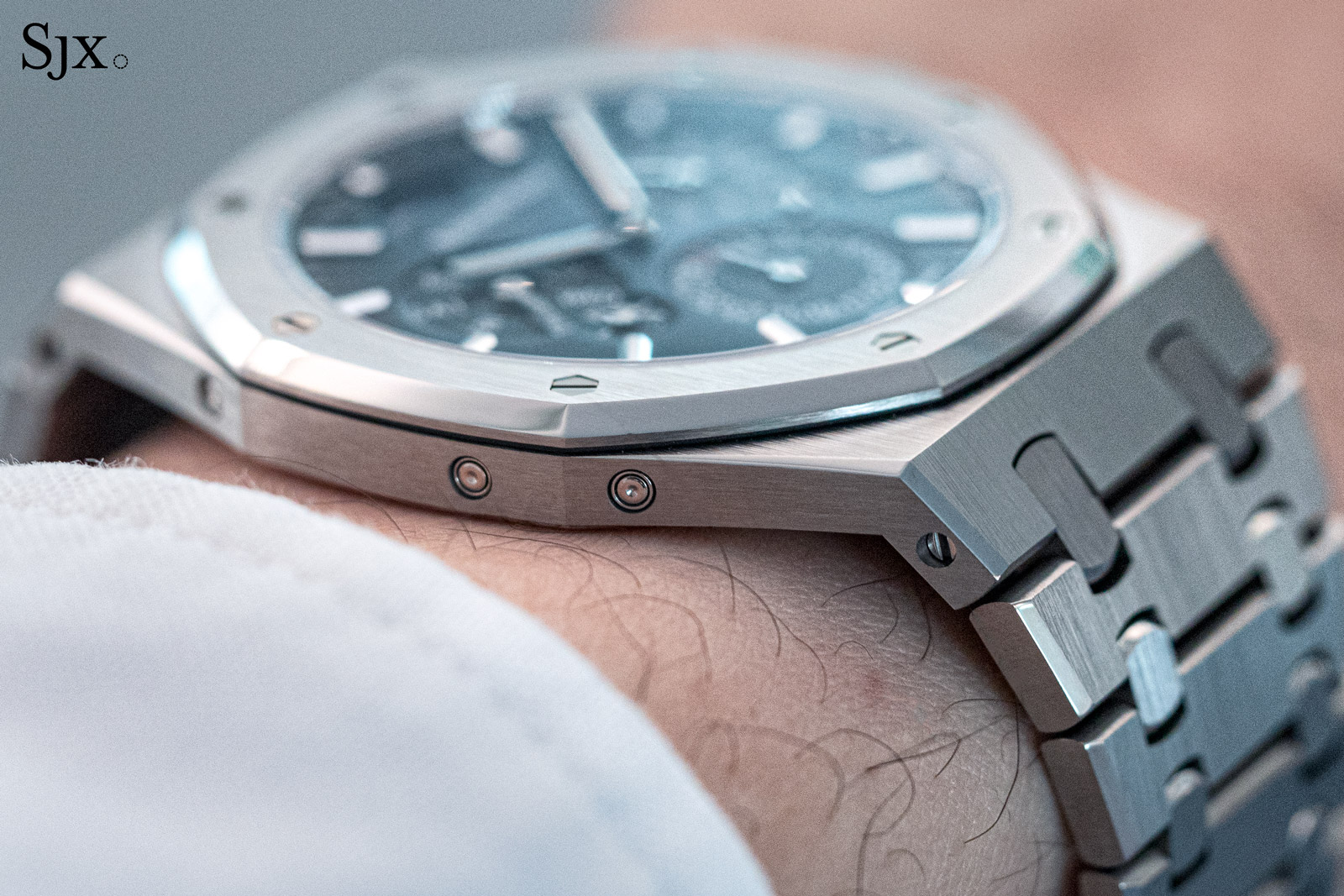
At 41 mm, the case is slightly wider than that of the “Jumbo” but substantially thinner at 6.2 mm. Despite the variance in dimensions, it is reminiscent of the “Jumbo” in proportions, which is a good thing.
As for the dial, it is radially brushed and finished in a graduated blue that goes from a medium hue to almost black at the edges. It’s a good-looking dial but the smoked finish is verging on overdone today, with a range of brands turning to gradient dials for an easily-achieved new look.

The mechanics of the watch are unchanged, with the cal. 5133 continuing to do its thing at just 2.9 mm high. Based on the cal. 2120 ultra-thin movement originally developed by Jaeger-LeCoultre and used in the original 1972 Royal Oak ref. 5402, the cal. 5133 reduces the moving parts to a minimum in order to achieve its slimness.
The barrel, for instance, is of a “floating” or “hanging” construction with a pivot only on one side. The upper pivot of the barrel is instead secured by the underside of the dial, which functions as a main plate of sorts. Other innovations include the rejigged calendar mechanism that spreads out the wheels driving the calendar, resulting in a 32 mm diameter, about 10% wider – but very much thinner – than the standard Royal Oak perpetual calendar movement.
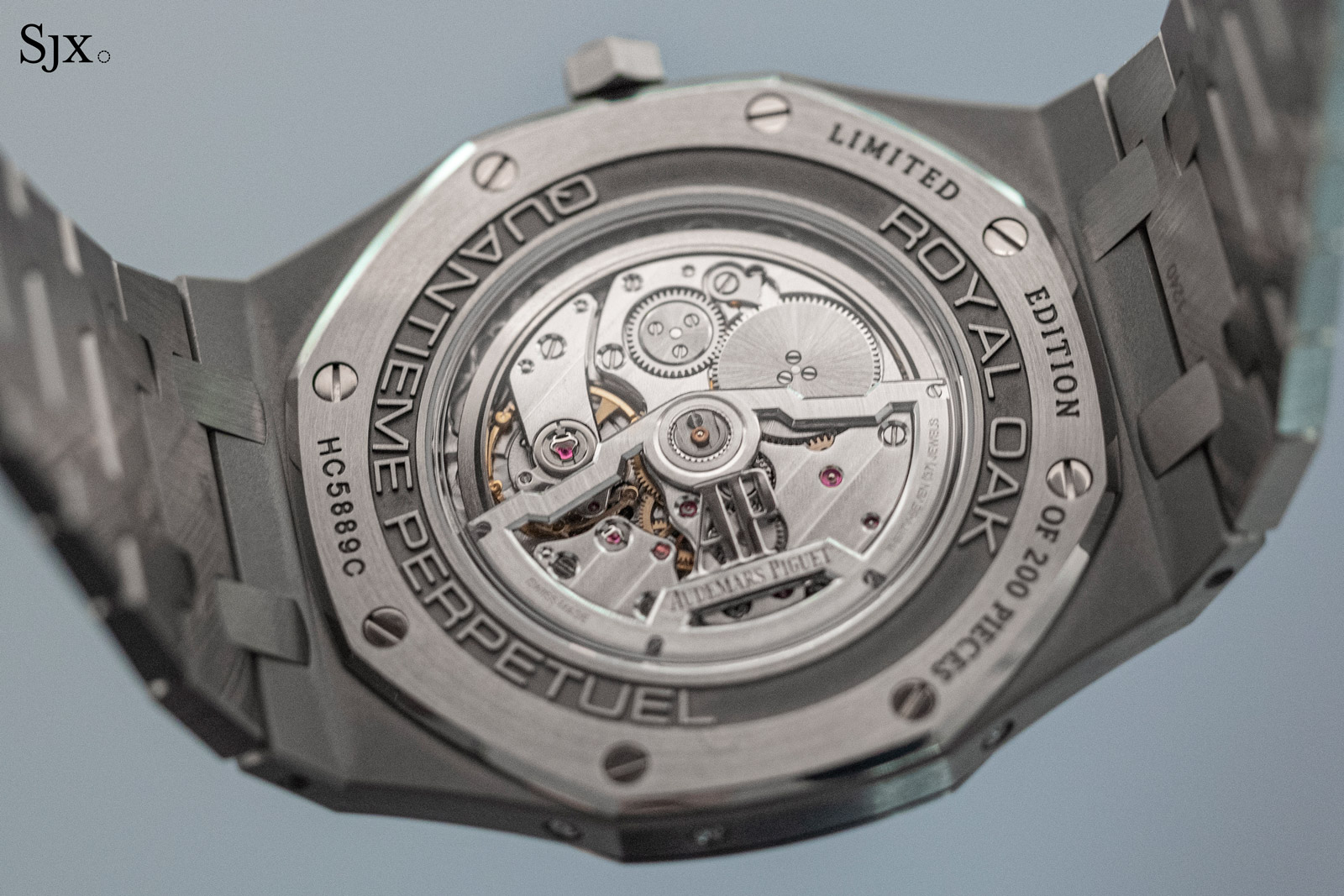
Naturally, the reductive movement construction requires some compromise. One is the relatively slow balance frequency of just 2.75 Hz or 19,800 beats per hour (most modern movements run at 4 Hz or 28,8000 beats per hour), which is not the best for stable timekeeping in the face of shock or other perturbations.
Another is a compact mainspring that has a short, 40-hour power reserve. By comparison, the latest-generation cal. 7121 found in the current Royal Oak “Jumbo” ref. 16202 has a 70-hour running time.
Key facts and price
Audemars Piguet Royal Oak Selfwinding Perpetual Calendar Ultra-Thin 41 mm
Ref. 26586TI.OO.1240TI. 01
Diameter: 41 mm
Height: 6.2 mm
Material: Titanium
Crystal: Sapphire
Water resistance: 20 m
Movement: Cal. 5133
Functions: Perpetual calendar with day, date, month, astronomical moon, leap year and day/night indications, hours and minutes.
Winding: Automatic
Frequency: 19,800 beats per hour (2.75 Hz)
Power reserve: 40 hours
Strap: Titanium bracelet with folding clasp
Limited edition: 200 pieces
Availability: At AP Houses and boutiques
Price: CHF137,000 before taxes
For more, visit Audemarspiguet.com.
Back to top.








